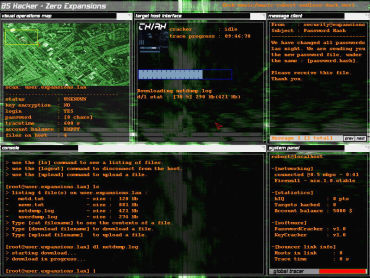 | « Back to article | Print this article |
Corporate spying in India: The tools they use
According to industry estimates, private detective agencies receive more than 10 requests a day by companies to spy on their rivals.
Fees for such services can range from Rs 50,000 to several lakhs of rupees.
With the competition increasing in the corporate world, companies are using every trick in the book to position their brand, launch new products and retain the best people.
A recent survey conducted by consultancy firm KPMG showed that 14 per cent of Indian companies have been victims of corporate spying.
Click NEXT to read more...
Corporate spying a booming business in India
Although everybody admits that corporate espionage is a growing problem, few are willing to go to court.
Experts say one reason could be the issue with Indian lax laws on spying and intellectual theft, firms do not see much benefit in spending money and time on legal action when successful prosecution could take years.
Click NEXT to read more...
Corporate spying a booming business in India
In early 2011, an Indian company -- Thermax -- agreed to pay United States-based Purolite $38 million to settle a case over alleged unauthorised usage of water purification technology.
So, let's look at some of the tools companies use to spy on their rivals.
Click NEXT to read more...
Corporate spying a booming business in India
Hacking is one of the most favourite tools of anyone trying to gain access to secret information.
There are three types of hacking: Remote, systems and physical.
Remote hacking is when an attacker enters the network remotely and without any special privileges. After securing access to administrative or higher level, the hacker steals the confidential information.
System hacking is when an attacker, who already has access to low-level or privilege user account, exploits a security issue or a hole in security settings to gain access to secret information.
Physical hacking is when an attacker personally enters a building and tries to gain information through unsecure workstations, servers or telephone room.
Hacking has become the preferred method because of easy availability of hacking tools and also because it is comparatively easy to do.
Click NEXT to read more...
Corporate spying a booming business in India
Social engineering is another preferred method of stealing classified information.
Social engineering involves an attacker sending an email in the guise of a system administrator requesting the user's password for some maintenance work.
The attacker will send the same email to several employees hoping that at least one unsuspecting employee will fall for the trap.
Password guessing in another technique. If an attacker can find out personal details about the target, such as children's name, birthdays, etc, he can most probably guess the password.
Click NEXT to read more...
Corporate spying a booming business in India
Although rummaging through garbage sounds disgusting, it is one of the most successful methods to glean secret data.
People sift through trash to get their hands on such things as memos, printouts of sensitive data, company policy manuals, etc.
Click NEXT to read more...
Corporate spying a booming business in India
To gain access to wireless network, all an attacker needs is the correct radio and proximity to the network.
Once the intruder has the basic tools, he can access both wired and wireless networks.
Click NEXT to read more...
Corporate spying a booming business in India
There are companies that provide devices to monitor a targeted phone's location, listen to phone calls via a web interface and check the user's text messages and web history.
Click NEXT to read more...
Corporate spying a booming business in India
There are pen-like devices that can scan whole documents without anybody noticing anything.
Some of these devices come with 64MB of internal memory, take MicroSD cards for expansion and can perform Bluetooth transfers as well.
They can scan without a computer, are highly portable and can transfers files to a BlackBerry or Windows Mobile smartphone or a computer.
Click NEXT to read more...
Corporate spying a booming business in India
There are tools that let you watch a live video feed from anywhere and listen in to phone conversations.
One such device is an 'air freshner' that has a colour camera inside, plus a SIM card that lets you watch the live video feed on a 3G phone.
There are also versions that call you when the device detects voices in a room.









